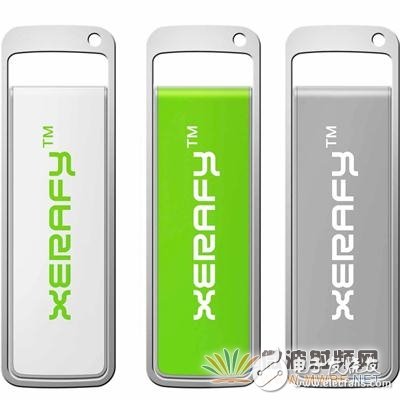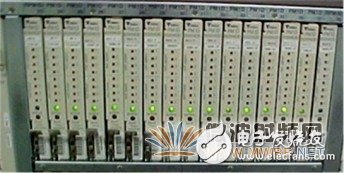The establishment of the Sarbanes-Oxley (1) and the Health Insurance Portability and Accountability Act (HIPAA) specifications concerning data storage and use are designed to protect important data related to the security of corporate financial systems, except for Confirming the company's ownership of assets and equipment, it also provides comprehensive control over the safe operation and management of assets and equipment. At the end of each fiscal quarter, some financial institutions, large manufacturing companies, and network service providers need to check the status of all servers, which are in service, which have been moved, or need to be replaced. At the same time, it also needs to count all assets and equipment in and out of the server room. A large and medium-sized enterprise data center contains more than 10,000 or even more data servers. Approximately 100 rows of server racks are needed to store these servers. Each row of racks can hold about 20 servers. To manage these servers, make them perform tasks accurately and work efficiently is indeed a business challenge, especially in the corporate financial sector, when the server is to retire, the company also needs to destroy the confidential information on the hard drive to protect the company Data security. In view of these cumbersome management methods, the database center uses a combination of barcodes and data maintenance logs to manage server devices. However, purely artificial labor and human-made errors often waste more time in management, and may also result in the possibility of inventory omission, which will increase production costs and monetary losses to the company. In order to improve the accuracy of inventory rates and reduce inventory time and labor costs, database center managers have turned to use RFID tag solutions. RFID technology can provide real-time asset identification. The biggest advantage of this technology is that unlike the previous manual reading of a bar code label, RFID can automatically read multiple servers at the same time, which greatly saves management time. Fig. 1: Xerafy's Trak Series Labels However, most of the server racks and other IT assets used in enterprises are made of metal materials, which is a challenge for the application of RFID technology. Since metal interferes with RF signals, the first difficulties that RFID tags face are not only robust enough to withstand the losses caused by daily movements, but also the ability to be read normally in a metal environment. In addition, the RFID tag has very high volume and shape design requirements for its own small-sized IT assets or closely-arranged server panels or chassis. Because the use of tag readers consumes the power of the tag battery, the application of passive RFID tags is more marketable. Although manufacturers of active or battery-powered passive (BAP) RFID tags have been able to provide tags for reading and writing in metal environments or on metal surfaces, the development of passive RFID tags has always been subject to this condition. limit. Xerafy, a professional high-strength passive RFID provider headquartered in Hong Kong, can provide a robust enterprise data center solution that meets both read and write requirements for metal. Designed to provide tailor-made solutions for customers and meet the industry standards set by the financial services industry, Xerafy's DataTrak tags are particularly well-suited for arranging tight server panels, chassis and other small IT assets with high-performance adhesives. Or you can choose to hang accessories to suit different applications. The DataTrak tag has a read/write distance of 2 to 4 meters and is suitable for any metal or non-metal surface. Another Xerafy product, the PicoXII tag, can be easily adapted to a blade-sized server, which is a small-sized asset. It is the smallest of the metal surface read-write tags and can be attached to a 2D bar code label. other apps. In addition, Xerafy's iN series of tags can be embedded in metal for tightly packed metal IT assets. This product design can be post-OEM processing to meet the company's or organization's internal application needs. Configure useful historical information to help speed up equipment recovery. Deeply affected by the beneficial effects of RFID technology, Bank of America and RFID GlobalSoluTIon have worked closely together to develop an RFID-compliant IT asset tracking management standard that meets industry-wide requirements through the International Federation of Financial Services Technology. This standard is undoubtedly used by other financial services organizations to adopt RFID technology. The realization of asset tracking management has opened up a development path. Bank of America identified three major business areas that benefited from RFID: operational efficiency, risk control, and industry regulations. Another aspect of benefiting from the return on RFID investment is reflected in employees’ satisfaction with saving hours of work at regular inventory. In the past, workers had to scan each server on the server rack with a bar code reader. Now they only need to push carts with readers. They can easily complete all assets in seconds by walking through a cabinet. inventory check. To read the passive RFID tags installed on the assets, workers can simply move the reader-mounted carts back and forth between the server racks to collect all asset information; to track the asset flow, the readers are installed on the assets. In and out of the access control office, the information on the circulation of all assets passed through the access control will be recorded. Knowing where the asset is located, anytime, anywhere, and in particular hardware facilities that record customer information is critical to the enterprise's risk management. The use of RFID technology can enhance the efficiency of the security protection of assets and the entire organization system. For example, a triggered alarm installed at an access control can detect whether data is illegally moved at any time. Combined with the Sarbanes-Oxley Act and other regulations specifically designed to manage the security of corporate assets, RFID provides a simple and accurate inventory update and management approach. It also provides efficient and intelligent solutions for tracking shipping and purchasing information. This will greatly increase the visibility of information, improve the synchronization of orders and payments, and will also increase the visibility of asset information across the entire data center. Real-time understanding of the location of servers and other hardware devices that hold customer data is critical to reducing corporate data risk. A number of studies have shown that technicians spend only 20% of their time on efficient production, while the remaining 80% of the time is devoted to tinkering with support work—collecting information, tracking parts, and finding tools to complete the work. Xerafy's high-strength metal surface read-write RFID tags have the following superior performance: 1. Real-time asset data visibility 2. Accurate and efficient inventory management 3. Reduce the incidence of asset leakage 4. Reduce ROI Cycle 5. Orderly asset maintenance tracking management brings high quality asset service levels Figure II: Server Rack (16 slots) In general, the use of RFID technology can improve the efficiency of corporate database center inventory management by 15 times, and save 80% to 90% of the time and labor costs through automated management. RFID technology also has positive significance for improving the efficiency of ordering, acceptance, and sales management of goods. (2) Here are the details of the time spent managing 10,000 assets in different ways: 1. Manpower management: 50 hours 2. Barcode scanning of individual assets: 16 hours 3. RFID tag scans individual assets: 4 hours 4. Using RFID for overall inventory management can save nearly 144 hours In addition, RFID tags can track the entire working process of drive decommissioning in real time and record all data information without threatening the security of the device. Therefore, we recommend using Xerafy's RFID tags to manage asset devices such as laptops, network routers, and improve the management efficiency of inventory and asset accountability. Dial Type Liquid Level Gauge,Fuel Level Gauge,Ultrasonic Level Gauge,Magnetic Level Gauge Taizhou Jiabo Instrument Technology Co., Ltd. , https://www.taizhoujbcbyq.com


Enterprise Database Center Construction Management
March 23, 2024